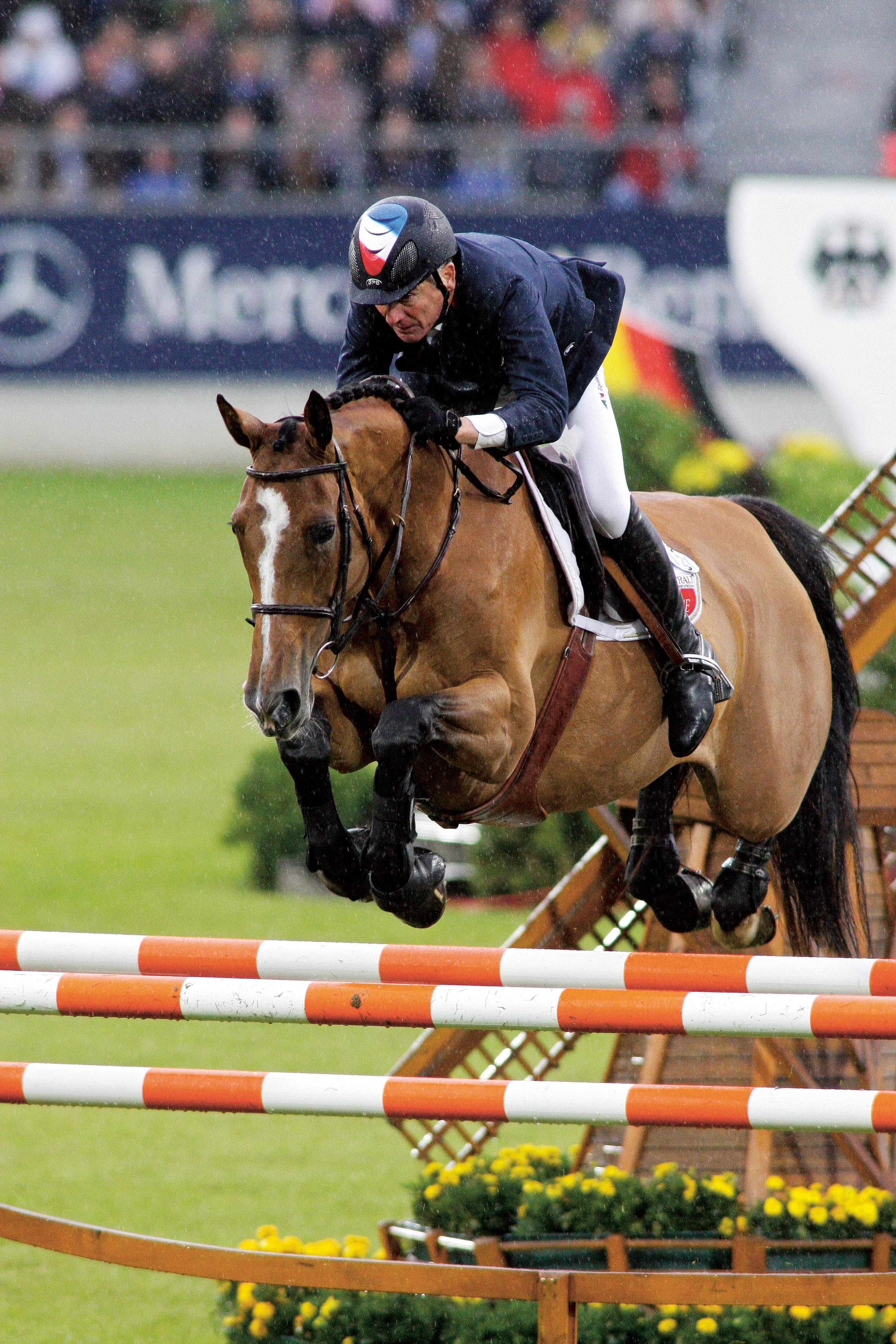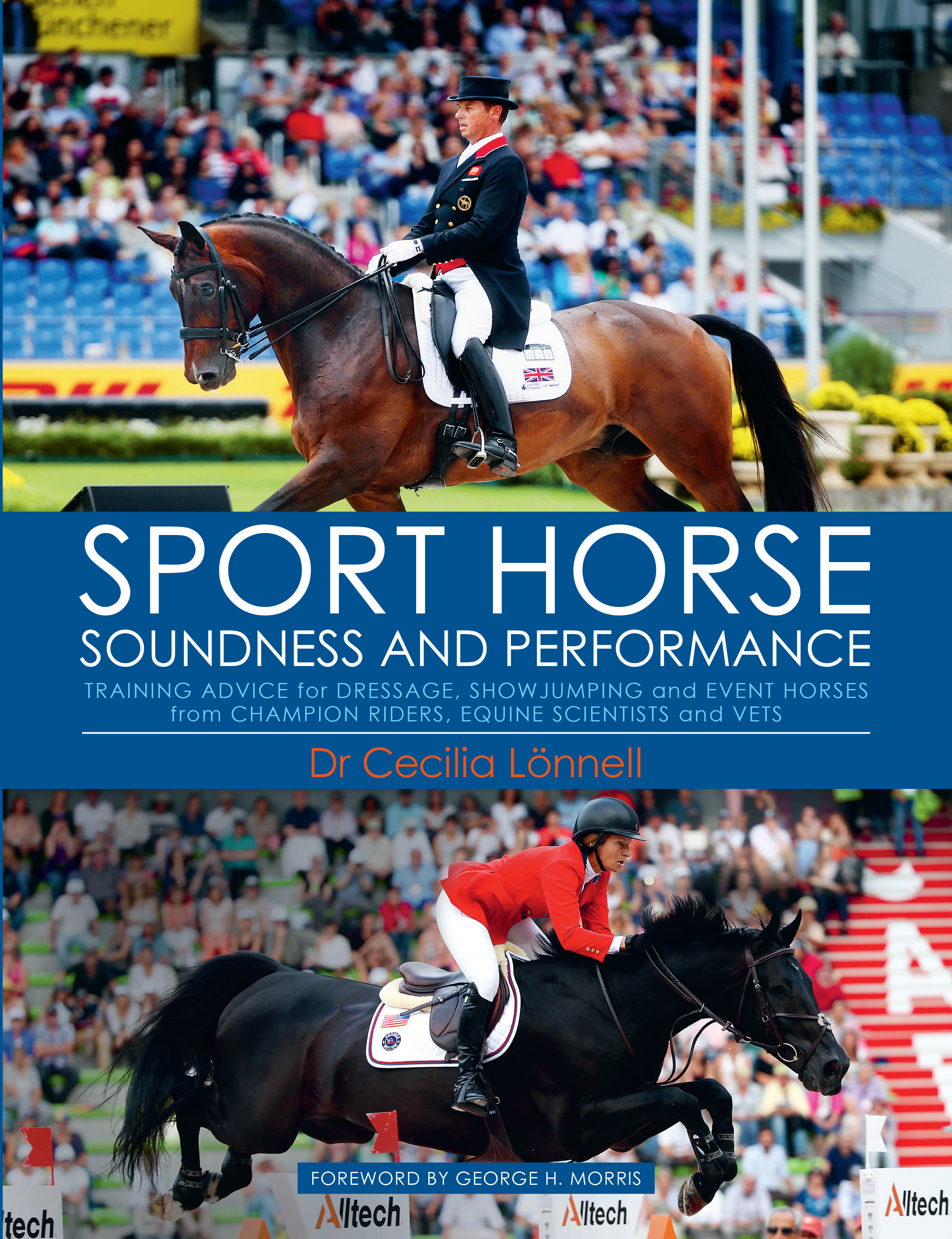This excerpt from Sport Horse Soundness by Dr. Cecilia Lönnell is adapted and reprinted with permission from Trafalgar Square Books (www.horseandriderbooks.com).
In this excerpt from her book Sport Horse Soundness and Performance, equestrian journalist and veterinarian Dr. Cecilia Lönnell shares how elite jumping horses are typically trained worldwide
Training variation has been found to be the single most influential factor regarding lost training days. The more variety the rider has in training, the fewer days lost to injury in the horses….. Another indicator that training variation appears to aid soundness is a PhD study by Åsa Braam of at the Swedish University of Agricultural Sciences, based on analyses of horses who participated in the Quality Testing of four-year-old Warmbloods and Swedish Federation competition results. Horses who, as youngsters, competed in more than one discipline, as a mean, had longer careers.

Michel Robert on Kellemoi de Pepita. Photo by Roland Thunholm
So, how is a training program for successful show jumpers designed? Let’s look at one study’s findings. The study riders were from Sweden, the United Kingdom, Switzerland, and the Netherlands, and competed at an elite level but, as professionals, but also trained young horses from four years of age.
How, and how much, the horses were trained varied significantly between the riders:
- How many ridden sessions per week (varied from 4.6 to 6.2).
- How long was the session (varied from 19 to 49 minutes).
The following activities were included in the training plan:
• All riders did flatwork (dressage) but how often varied from 1.4 to 4.8 sessions per week.
• How much hacking (trail riding or in fields) the horses did as a percentage of the total training varied from 5 to 45 percent (or from less than one twentieth to almost half of all training time).
• All riders except four longed their horses as part of the training regimen.
• In Sweden, where some speed testing was done, five of the riders did canter work slower than 400m per minute. Four of the Swedish riders did canter work on a racing track (for trotting or for other equestrian use) and in one case at up to 700m per minute.
• Five Swedish riders used hillwork in their training.
• Additional activities (one or two riders each): loose jumping, loose canters in an arena, treadmill work, long-reining.
• Time for non-ridden activities (so how much time daily the horses spent outside the stall) also varied greatly between riders. Including paddock turnout it was from 1.3 to 11.3 hours.
• All riders except one in the four countries turned the horses out in a field/paddock. The mean daily time for turnout was 3.8 hours, but then for some riders, it was double that.
• All riders except one used a hot walker in the daily work.
• All except five hand-walked as light exercise or for relaxation, especially at shows.
• The mean percentage of planned rest days was 23 percent, but varied from 10 to 38 percent. In other words, the average horse had a rest day every fourth day, but some had one every ten days and others almost every second day.
One common cause of injury is repetitive work. Think overuse injuries in the workplace. This can be prevented by variation in training, both in terms of the type of work and the demands made.

Pick up your copy of Sport Horse Soundness from Trafalgar Square books HERE.
